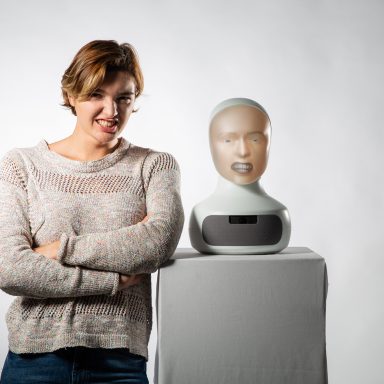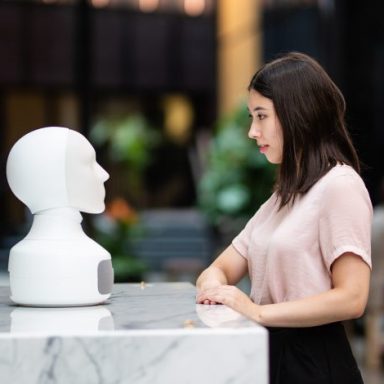Customer spotlight
Understanding facial expressions
Furhat is used to explore cultural differences in using facial expressions.
The research focus
At the Centre for Social, Cognitive and Affective Neuroscience (cSCAN), at Glasgow University in the UK, Dr Rachael Jack and her fellow researchers are using the Furhat robot to conduct experiments that investigate cultural differences in using facial expressions for social communication. Studies are made on how the brain reacts to different facial expressions designed and programmed into Furhat.
Social robots must be able to communicate effectively by using a host of different modalities, including human-like facial expressions. Whilst humans can effortlessly understand and produce the non-verbal language of facial expressions, social robots, which are already being commercially deployed in educational and care settings, cannot yet do this. It is also not clear or straight forward to design gestures that are culturally universal due to our limited understanding of the relationship between facial expressions and culture. To address this limitation, Dr Jack and her team have been formally characterising the language of facial expressions; understanding its structure, syntax, and semantics to develop mathematical models that will equip social robots with this most human of abilities.
How Furhat contributes
The customizability and fine control of Furhat’s face and facial expressions make it a perfect companion for this research track.
About the lab
The researchers at cSCAN address the mechanisms within social perception, social cognition, and social interaction, and belong to the Institute of Neuroscience & Psychology.



